The AMD Ryzen Threadripper 1950X and 1920X Review: CPUs on Steroids
by Ian Cutress on August 10, 2017 9:00 AM ESTShadow of Mordor
The next title in our testing is a battle of system performance with the open world action-adventure title, Middle Earth: Shadow of Mordor (SoM for short). Produced by Monolith and using the LithTech Jupiter EX engine and numerous detail add-ons, SoM goes for detail and complexity. The main story itself was written by the same writer as Red Dead Redemption, and it received Zero Punctuation’s Game of The Year in 2014.
A 2014 game is fairly old to be testing now, however SoM has a stable code and player base, and can still stress a PC down to the ones and zeroes. At the time, SoM was unique, offering a dynamic screen resolution setting allowing users to render at high resolutions that are then scaled down to the monitor. This form of natural oversampling was designed to let the user experience a truer vision of what the developers wanted, assuming you had the graphics hardware to power it but had a sub-4K monitor.
The title has an in-game benchmark, for which we run with an automated script implement the graphics settings, select the benchmark, and parse the frame-time output which is dumped on the drive. The graphics settings include standard options such as Graphical Quality, Lighting, Mesh, Motion Blur, Shadow Quality, Textures, Vegetation Range, Depth of Field, Transparency and Tessellation. There are standard presets as well.
We run the benchmark at 1080p and a native 4K, using our 4K monitors, at the Ultra preset. Results are averaged across four runs and we report the average frame rate, 99th percentile frame rate, and time under analysis.
All of our benchmark results can also be found in our benchmark engine, Bench.
MSI GTX 1080 Gaming 8G Performance
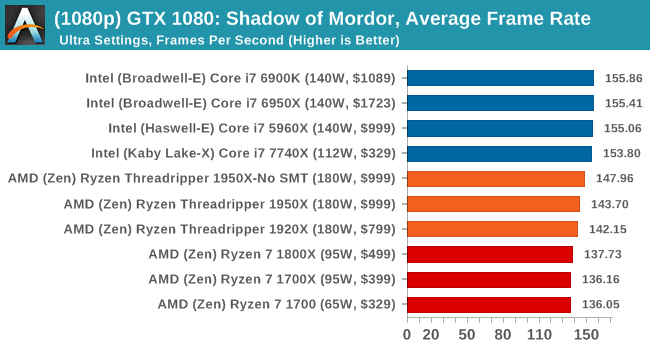
1080p


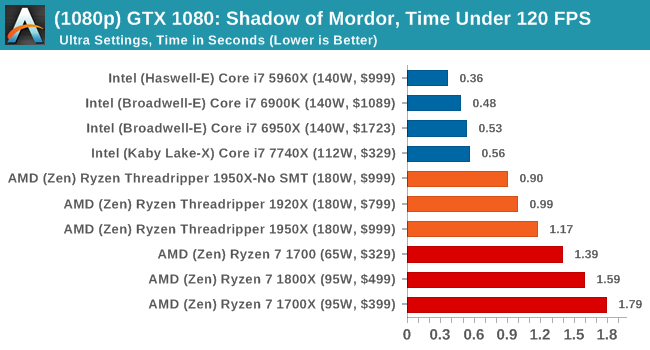
4K
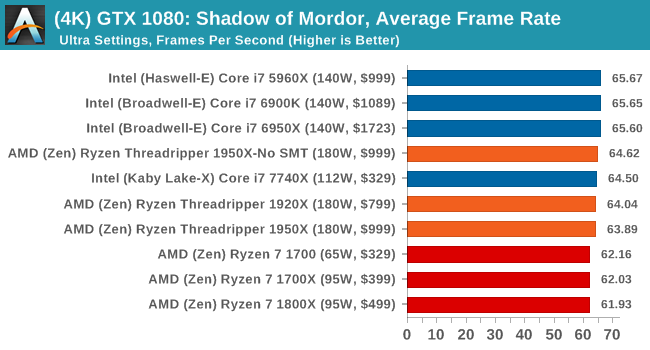
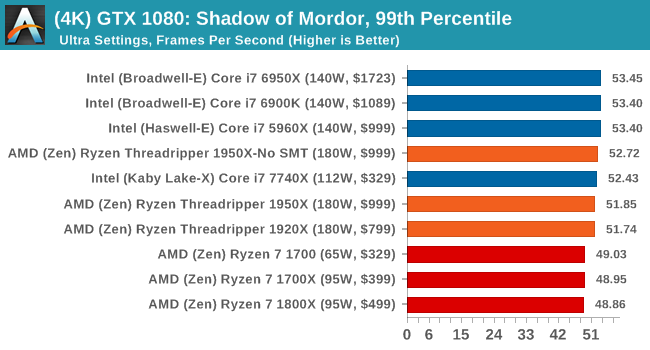
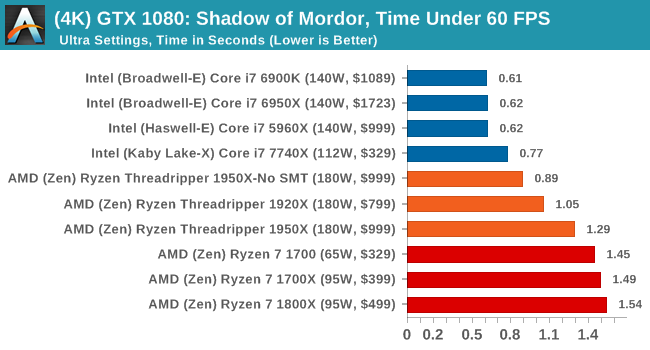
ASUS GTX 1060 Strix 6G Performance
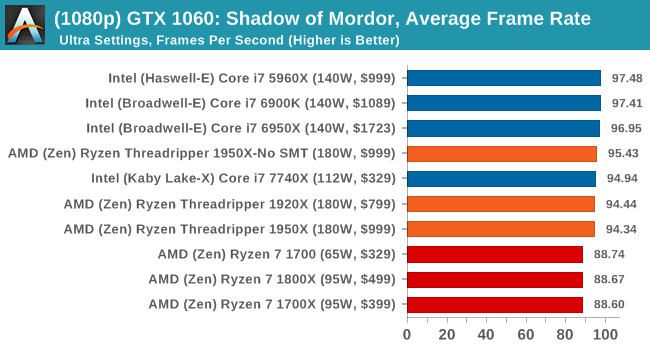
1080p

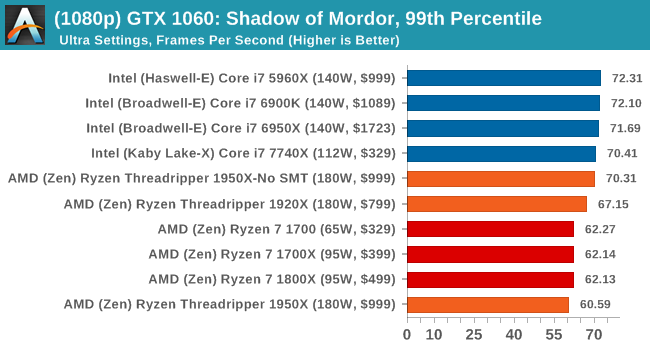
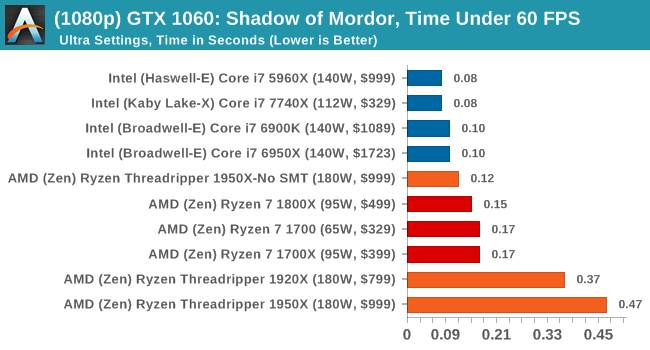
4K
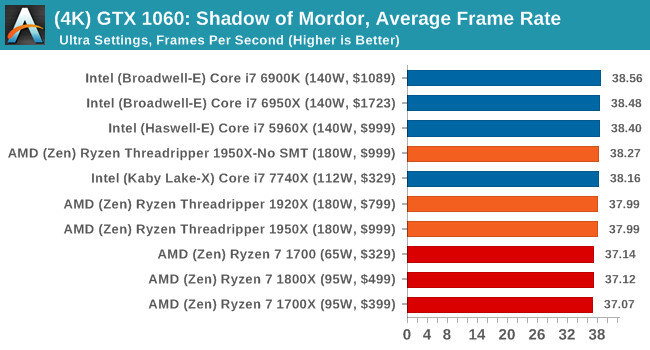
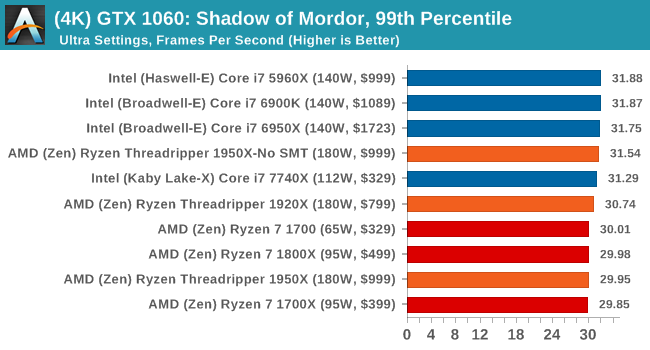
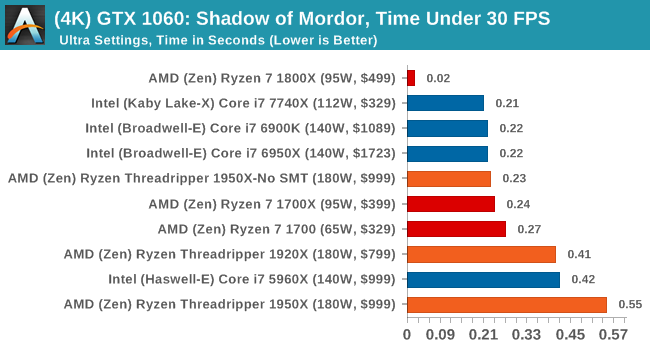
Sapphire Nitro R9 Fury 4G Performance
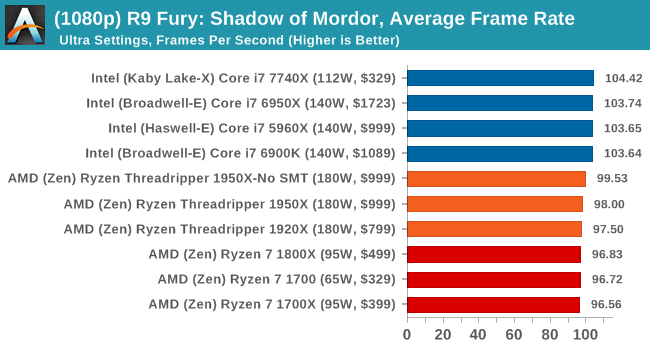
1080p


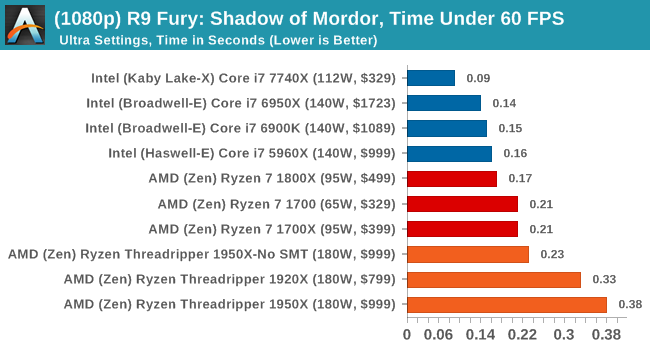
4K
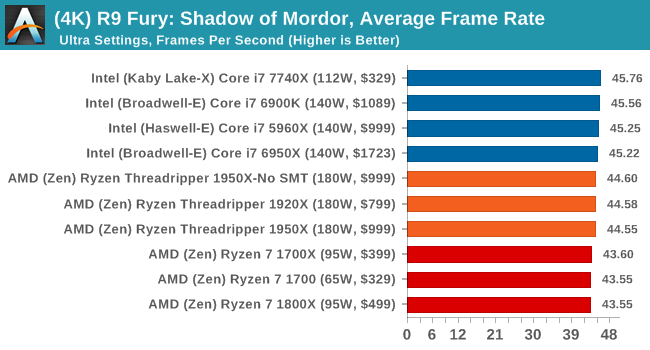

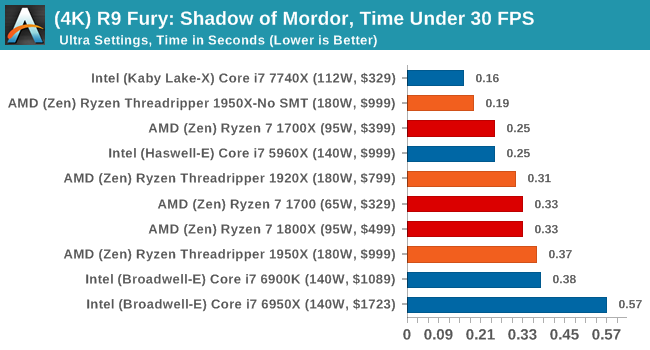
Sapphire Nitro RX 480 8G Performance
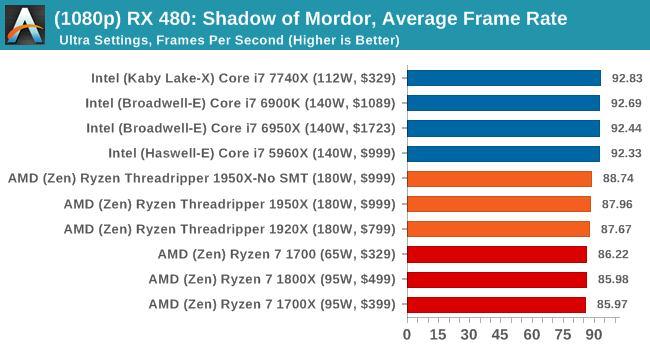
1080p


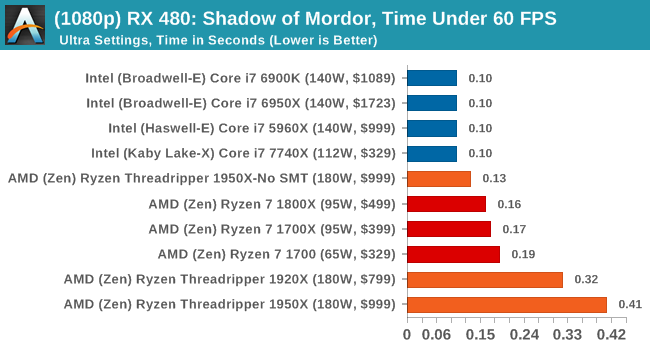
4K

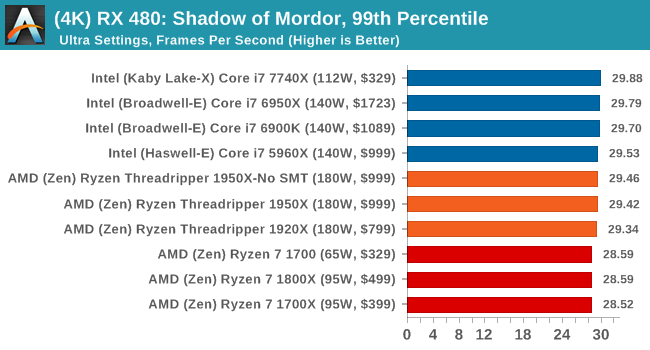



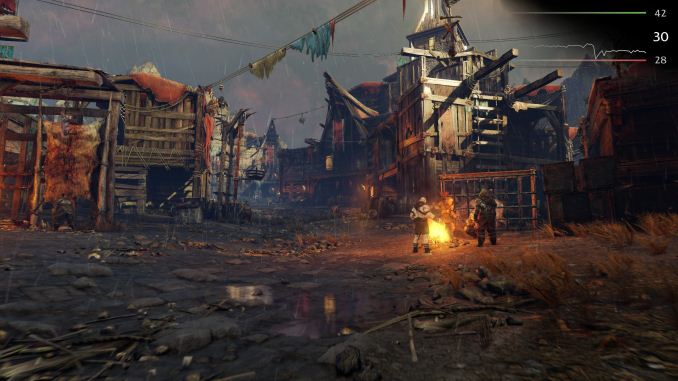
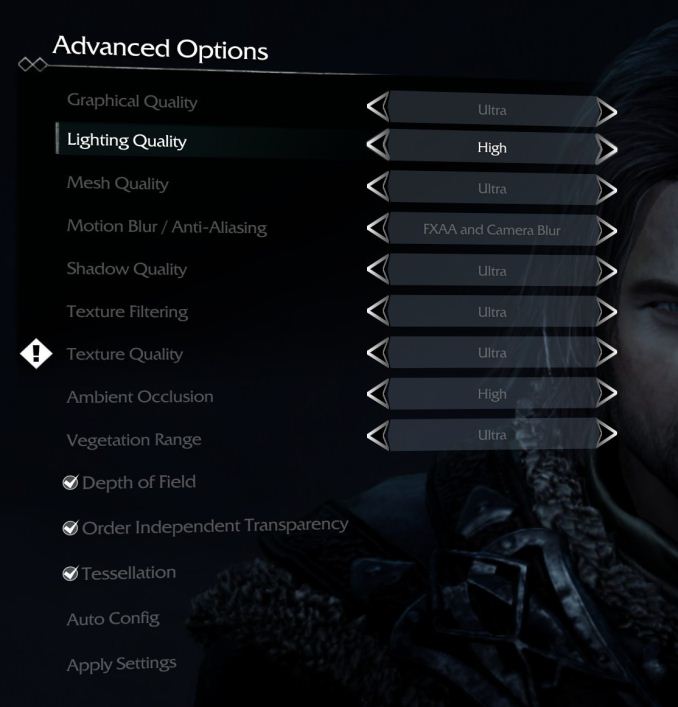








347 Comments
View All Comments
Ian Cutress - Thursday, August 10, 2017 - link
We didn't post gaming performance for Ryzen at launch either, for similar reasons.bongey - Thursday, August 10, 2017 - link
Stop lying , you commented on gaming performance in your conclusion, without even benchmarking it in gaming.That is much worse.
Adul - Thursday, August 10, 2017 - link
How is that lying? They did not post gaming benchmarks. That is what he said.What was mention in conclusion was not part of his statement.Integr8d - Thursday, August 10, 2017 - link
It's called lying by omission...James S - Friday, August 11, 2017 - link
Ian did not lie even by omission. They clearly stated in the Ryzen conclusion and clearly stated in the Skylake-x conclusion why they didn't test gaming.“You can please some of the people all of the time, you can please all of the people some of the time, but you can't please all of the people all of the time”
just4U - Saturday, August 12, 2017 - link
I think it's pretty ignorant of someone to state that Ian is lying in his own comments about articles he has written....alysdexia - Thursday, April 18, 2019 - link
Omission isn't lyging; it's self-censorship.Gothmoth - Thursday, August 10, 2017 - link
intel pays good money for advertising at anandtech....Nfarce - Thursday, August 10, 2017 - link
Listen to you fanyboy crybabies. Tom's and Guru3D did gaming benches too. Go find a Reddit AMD fanboy forum that will give a 100% glowing review of your precious Threadsnapper. You won't find a single credible tech site out there doing it. It's called impartiality. Oh and one more thing ladies: you all are aware that AMD sent the major tech review sites the EXACT same hardware kit for review, right?tuxRoller - Thursday, August 10, 2017 - link
ThreadSNAPPER? If this was intentional, I assume it's meant to be derogatory, but I'm not sure what it is meant to imply.